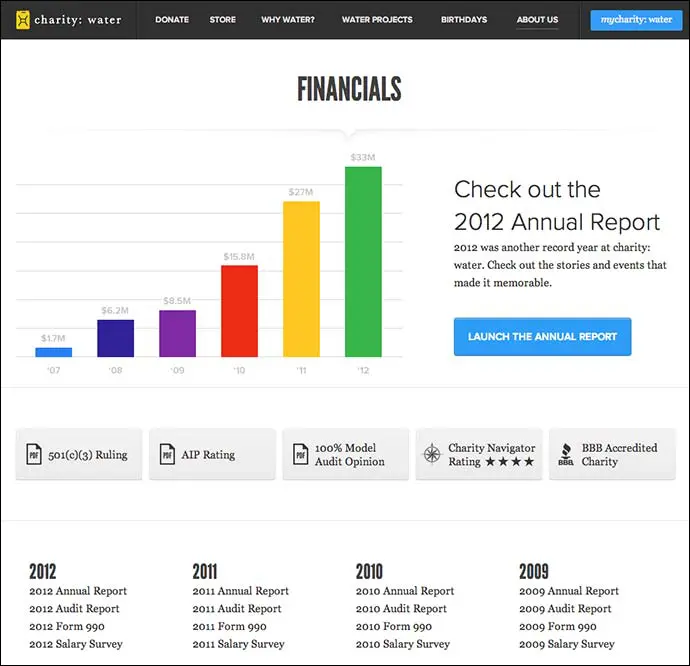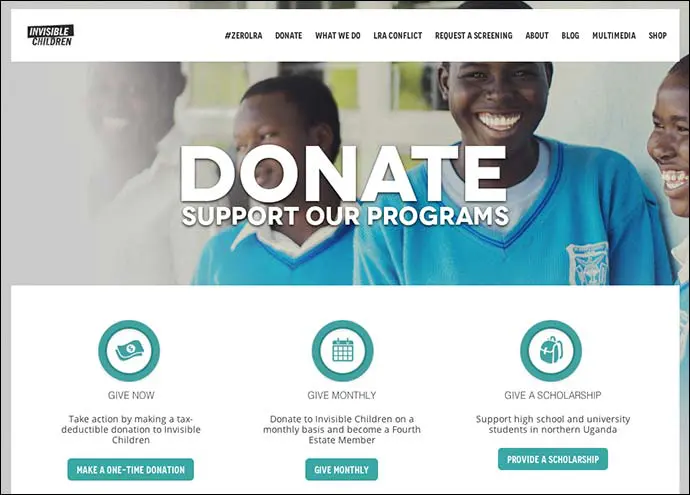Getting website visitors to donate online is hard. It’s difficult to drive visitors to your website in the first place. Once a visitor is on your site, it’s tough to inspire them and get them invested in your cause. Even after they’re invested, it’s no easy feat getting them to decide to support your nonprofit with a financial contribution.
That’s a lot to tackle in one blog post, so let’s focus in a bit.
Instilling a sense of confidence in your organization can go a long way in leading a potential donor to give. Once you’ve piqued their interest, ensure you’re inspiring comfort and confidence in giving to your organization online. Doing so will help keep folks from turning back from the brink of becoming a donor.
1. Showcase Your 501(c)3 Status
You definitely don’t want folks wondering whether or not you’re a certified 501(c)3. Make that info easy to find on your donation page. Consider even incorporating it into other content on your pages (like your About page) as well as your footer to make it hard to miss.
And remind potential donors their donation is tax deductible. There’s no harm reminding them there’s a financial benefit in it for them as well.
2. Share Your Financial Information
Many donors won’t care about your financials. But some will. In fact, some won’t donate without seeing it.
At the very least, make your 990 accessible. If you have a nice Annual Report consider adding that in as well. Maybe you’re accredited by some third-party organization like the BBB or have a high rating on Charity Navigator. Put those things up there too.
The more you can do to show transparency and inspire confidence, the more likely it is a potential donor will decide to give.
Charity: Water Example
I love the Financial page on the charity: water website. They share all kinds of information to help build trust and confidence.

3. Set Expectations for After the Donation is Made
Do you send a tax receipt and a Thank You email right after a donor makes a contribution? How long does it take for those to arrive?
Tell your potential donors what to expect. You’re not only providing answers to questions they may have, you’re also removing barriers to them deciding to make a contribution to your cause.
4. Share How You’ll Use Donations
Tell your donors how you’ll use their donations. Get as specific as you can.
Instead of:
Your donation will help kids get nutritious meals.
Try:
Your donation of $30 will help 3 kids in India get a healthy
breakfast, lunch and dinner they wouldn’t otherwise be able to afford.
The second option is a whole lot easier to picture, which increases the likelihood someone will give. But it also makes you seem like you know where the money will go. Your donor can be more confident their contribution will go to support kids in India, not your staff holiday party.
5. Showcase Your Past Successes
Nothing inspires confidence like a proven track record. If you’ve achieved success in the past, shout it from every metaphorical rooftop you possibly can throughout your website.
Weave success stories throughout the pages of your site. Include photos of past successes on the donate page to remind visitors you know what you’re doing.
You’ve done it. Now make sure your visitors know it.
Invisible Children Example
The Invisible Children donate page employs subtlety when reminding donors of their impact. The large image on the page shows a few kids in uniform smiling. The options to give are outlined just below these smiling faces.

6. Talk About Longer-Term Follow Up
Hop back on the accountability bandwagon for a moment and tell potential donors how you’ll let them know their contribution is making a difference. Will you send emails with impact stories from the field? Will you write blog posts about the way their donations have changed lives? Will you share their impact on social media?
Let your donors know how to find out the difference they’re making in the community you serve. Not only does it make them more likely to give upfront, it also promotes an ongoing relationship with your organization.
As a nonprofit, what are you doing to instill confidence in your potential donors? Or as a donor, what do you look for when donating online to a nonprofit? Let me know in the comments below.
Image courtesy of Nic McPhee

Comments